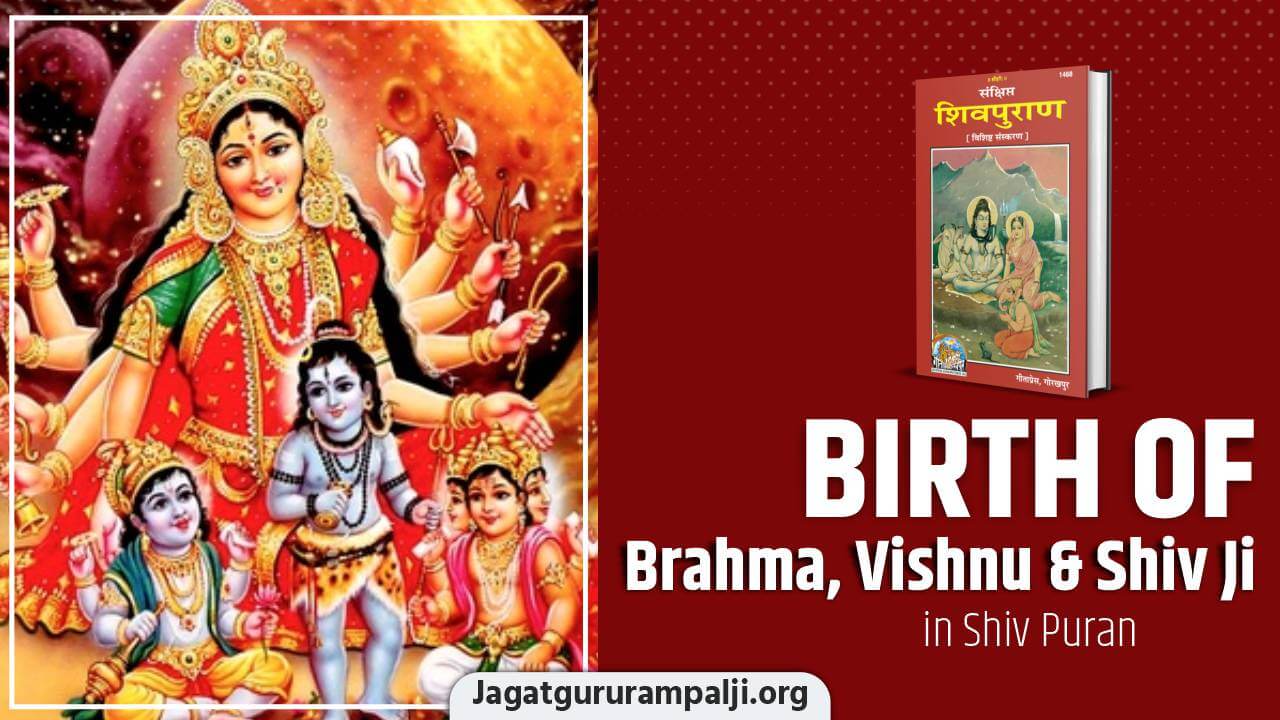
Since ages we have been following our rituals and worshipping like our ancestors used to do. Specifically in Hindu religion, Brahma, Vishnu and Mahesh are considered the Supreme God’s above all deities. But this is not what our Holy Scriptures certify. In Holy Shiva Purana evidence has been mentioned which proves that there is some other God SadaShiv (Kaal Brahm) who is above these three Gods (in reality, SadaShiv is also not the supreme power).
Let us read the shreds of evidences to know how Brahma, Vishnu and Mahesh took birth and Who are their parents?
The following will be discussed
In Shiv Puran, Maharishi Ved Vyas recounts a crucial episode where Sage Narad asks his father Lord Brahma about the universe’s creator. Shri Brahma Ji explains how the universe was created based on his knowledge which is somewhat true and somewhat false.
Source: Shiv Puran (concise) published by Gita Press Gorakhpur (only in Hindi),
Editor: Hanuman Prasad Poddar
Adhyay 6 of Rudra Samhita, Pages: 119-120
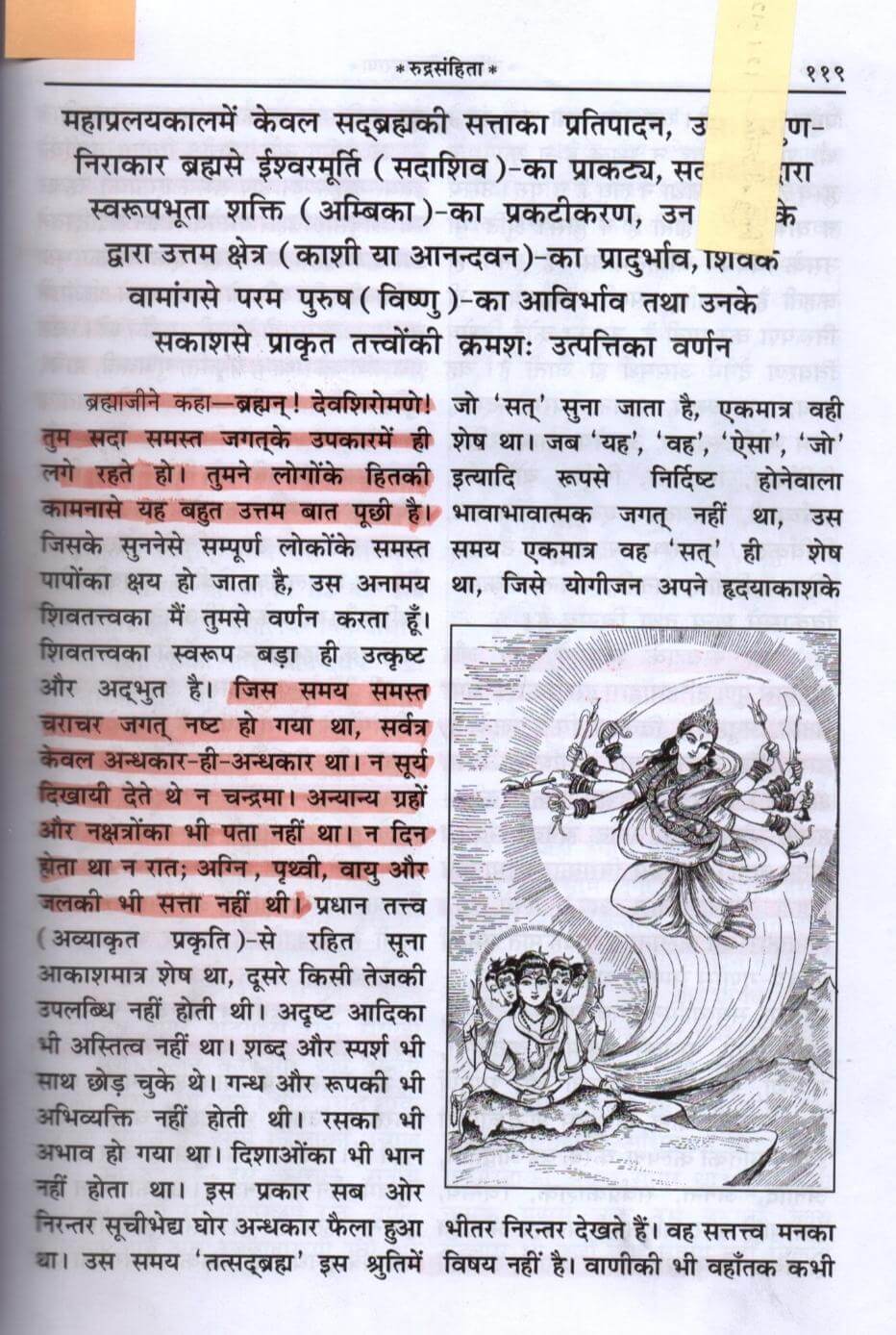
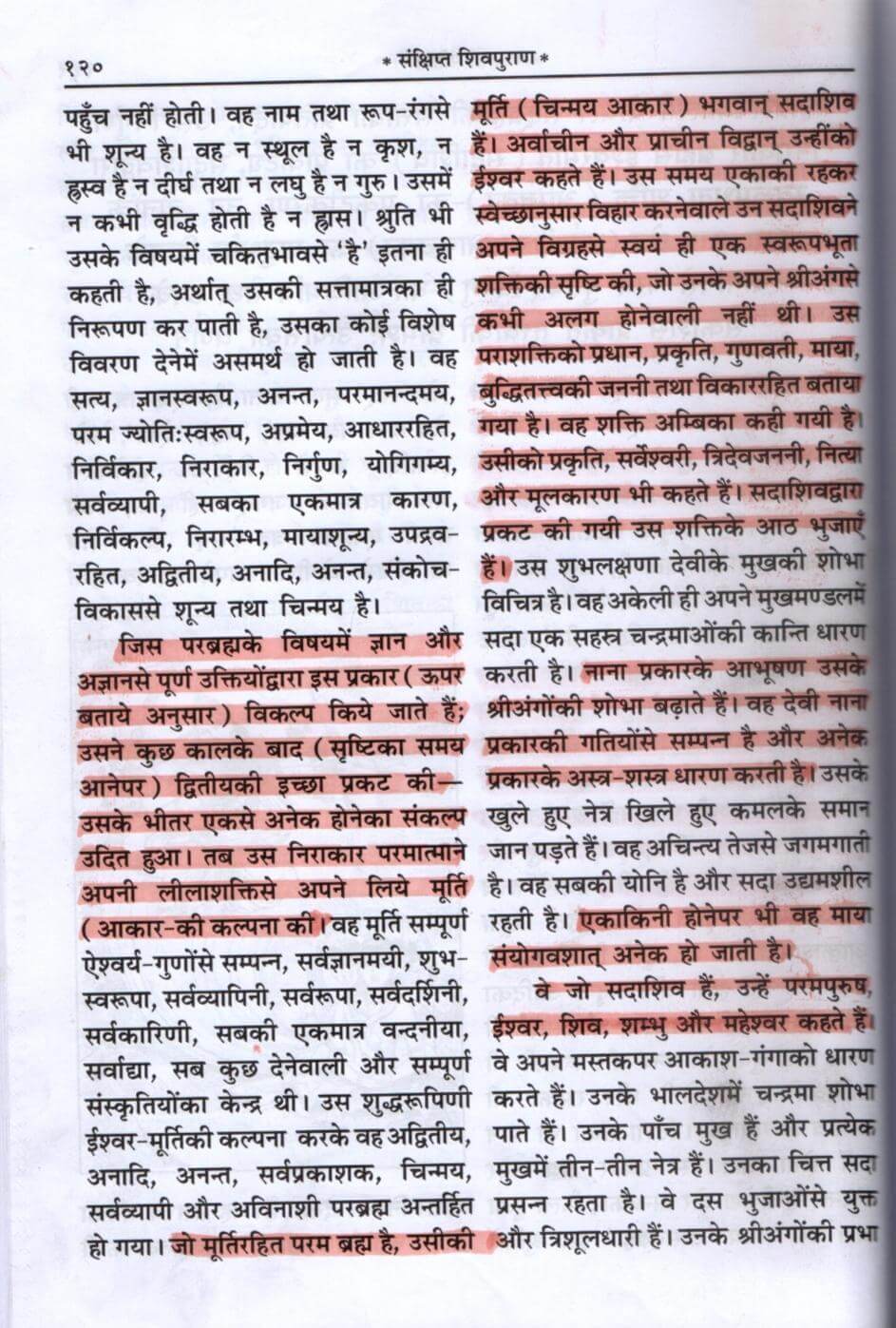
Initially, only darkness prevailed devoid of stars, sun, constellations, and day and night. Only the revelation of ‘Sat’ existed from ‘Tat Sat Brahm’. After a certain time, ‘ParBrahm’ decided to create more souls.
The ‘invisible Parmaatma’ first manifested in his own form, giving rise to ‘Sadashiv’. Sadashiv, in turn, created another power from his own body, known as ‘Pradhan/ Prakriti/ Gunvati’, or ‘Buddhitatava janani’, also named ‘Ambika/ Sarveshwari/ Tridev Janani/ Nitya/ Moolkaaran. This feminine power possesses ‘eight arms’.
Brahma further describes the qualities of this ‘Tridev Janani’ as one adorned with several ornaments, possessing various magical skills, and wielding multiple weapons. She can also transform herself into multiple entities and disguises herself.
‘Sadashiv’ is also known as Parampurush/ Ishwar/ Shiv/ Shambhu/ Maheshwar.
Key points:
Shiv Puran has been scrutinised by countless saints throughout history for spiritual insights. However, several important disclosures about the origin of Brahma, Vishnu and Mahesh have gone unnoticed by them. Sant Rampal Ji Maharaj Ji is the only saint who has breathed life into these dormant-looking details. He has uniquely dissected and interpreted the holy texts, revealing its hidden meanings. Only a Tatvdarshi Sant can unravel the concealed wisdom within our scriptures, and Sant Rampal Ji has pinpointed the decisive words spoken by Brahma.
Before moving into the next summary and analysis, it’s imperative to grasp that in describing ‘Sadashiv,’ Brahma employs several words seemingly synonymous with this entity but are, in fact not. Sant Rampal Ji has demonstrated that the words ‘Sat,’ ‘ParBrahm/ Parampurush/ Ishwar/ Shiv/ Shambhu,’ and ‘Maheshwar’ refer to different deities within the spiritual hierarchy of the cosmos.
Source: Shiv Puran (concise) published by Gita Press Gorakhpur (only in Hindi),
Editor: Hanuman Prasad Poddar
Adhyay 6 of Rudra Sahita, Page 121-122
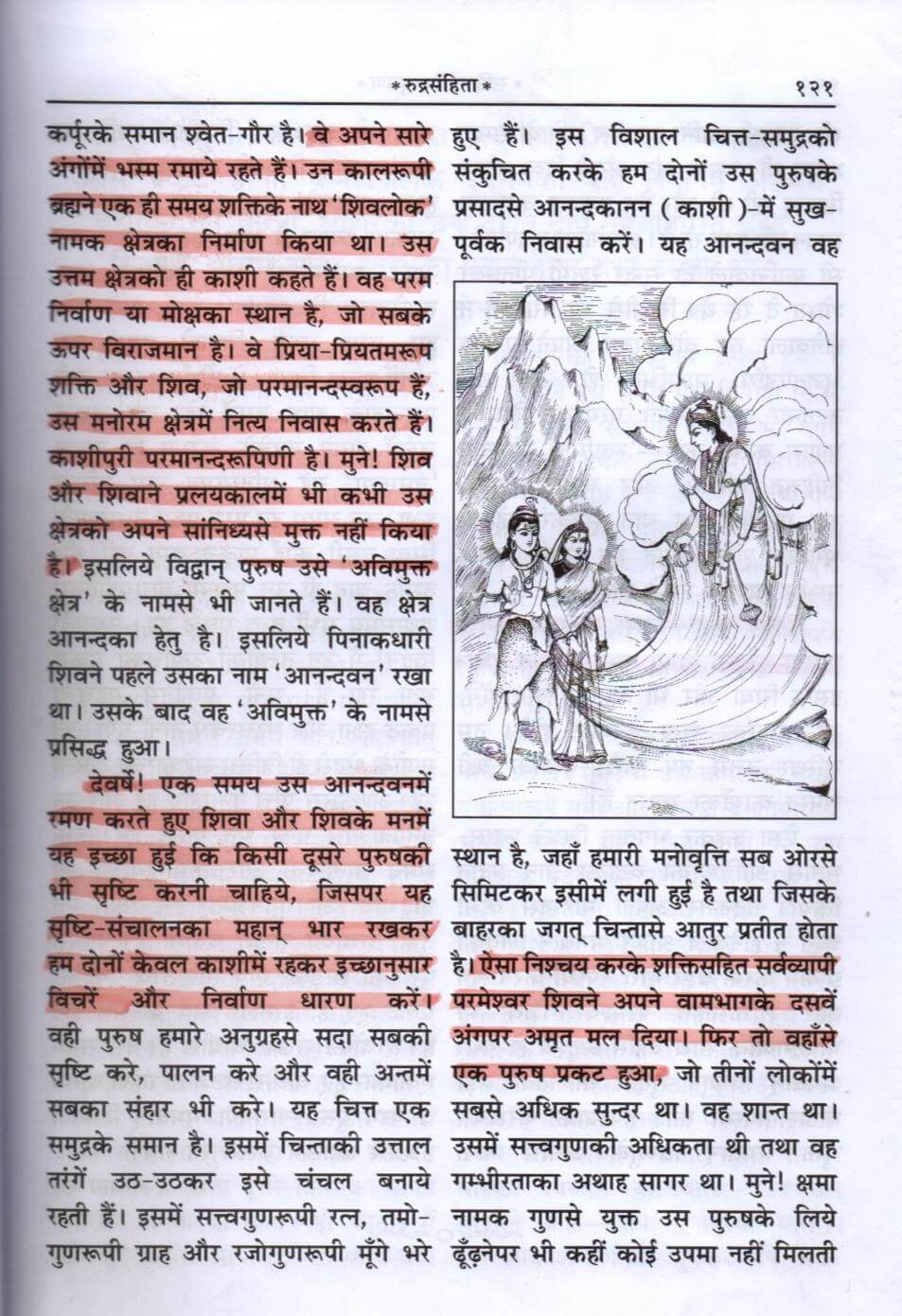
According to Lord Brahma’s narration to his son Sage Narad, God Sadashiv always smears ash on his whole body. He is Kaal form Brahm’ (Kaal Brahm). This cosmic entity, along with his counterpart Shakti (Durga), has established a place named Shivlok, their celestial abode where they reside as a divine couple.
After a period, they decided to conceive an heir, entrusting him with the responsibility of governing the universe. Hence, Shiv and Shakti (Kaal Brahm and Goddess Durga) produced a child and named him Vishnu.
Key Points:
Source: Shiv Puran (concise) published by Gita Press Gorakhpur (only in Hindi),
Editor: Hanuman Prasad Poddar
Adhyay 7 of Rudra Samhita, Page 123
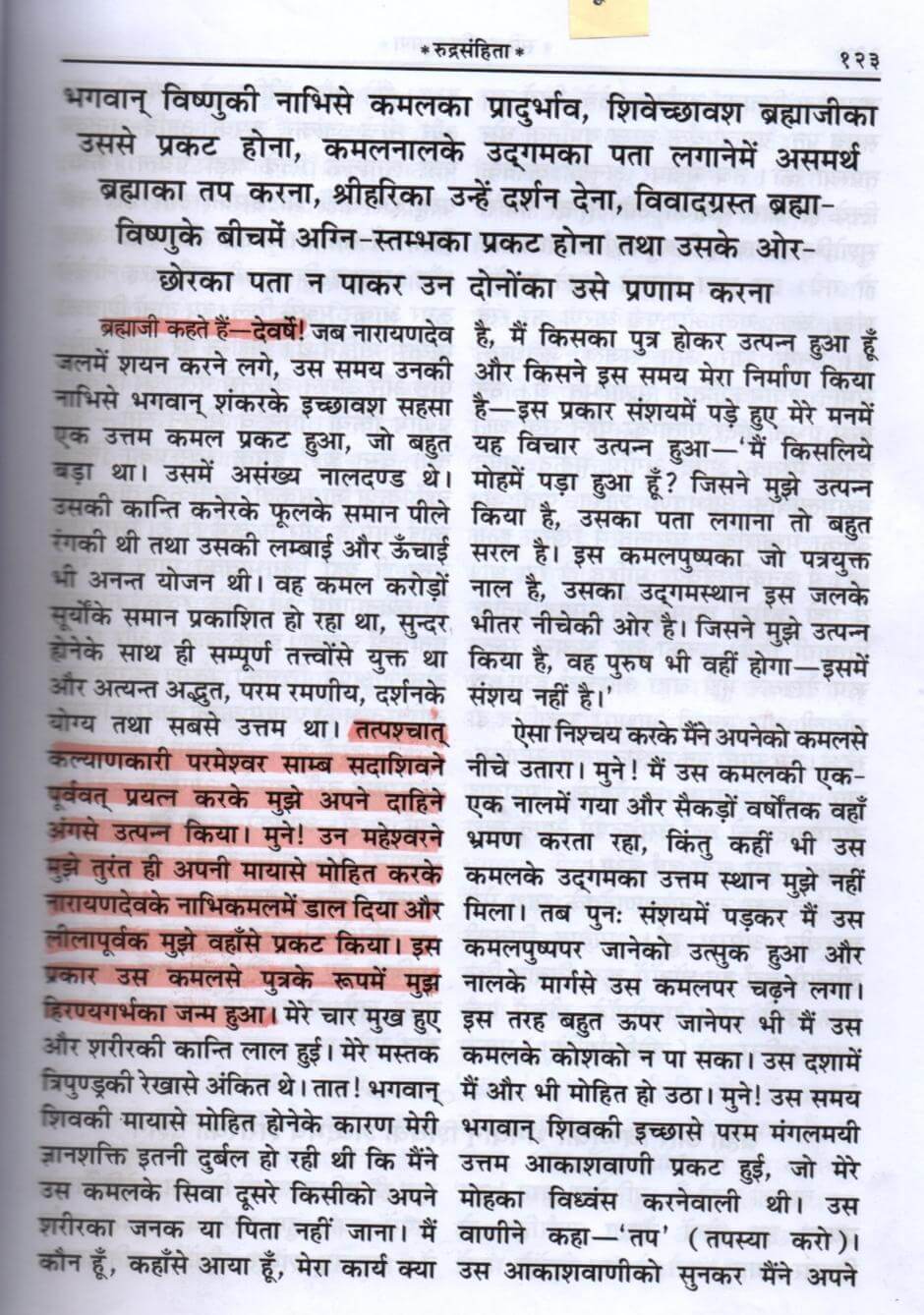
According to Lord Brahma’s account, Sadashiv brought him into existence in a manner similar to Lord Vishnu. Surprisingly, he reveals that upon gaining consciousness as a child, he was unaware of his father’s identity, his role, and the creator behind his existence.
Key Points:
Yet, Sant Rampal Ji Maharaj Ji, the genuine Tatvdarshi Sant, has adeptly rectified the distortions introduced by these Sanskrit scholars. In another remarkable insight, He draws attention to an accidental revelation made by the translator on page 130 of Chapter 9 in Rudra Samhita of Shiva Puran.
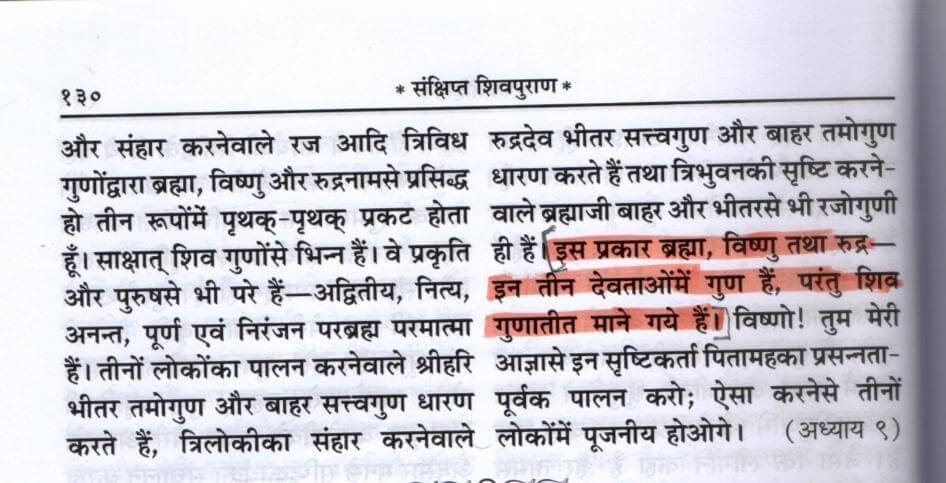
This distinction clearly delineates Kaal Brahm as the fourth entity alongside his three sons.
Sant Rampal Ji Maharaj Ji has left no stone unturned, and has presented one more compelling evidence from Shiv Purana to substantiate the profound origin of this Trimurti.
Source: Shiv Puran (concise) published by Gita Press Gorakhpur (available only in Hindi)
Vidveshwar Samhita, Pages 44-45

Summary:
In a fascinating tale from these pages, Brahma and Vishnu find themselves locked in a fierce battle, each vying to prove the other as his son. The root cause of this fight was the desire for supremacy.
Sant Rampal Ji unfolds the narrative, revealing that as the conflict spiralled out of control, Kaal Brahm manifested in the form of Shiv. Brahma and Vishnu then inquired about the governing rules of the universe. Kaal Brahm explained to his sons that through intense penance, they had earned their responsibilities of genesis and preservation. Similarly, Rudra and Maheshwar had also acquired their roles through penance.
Key points: